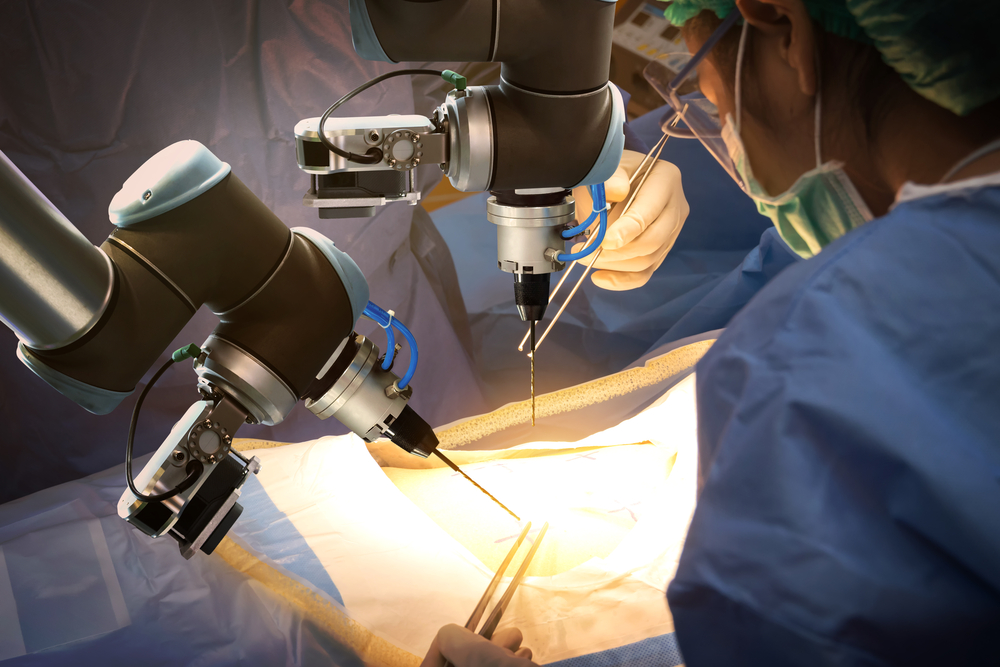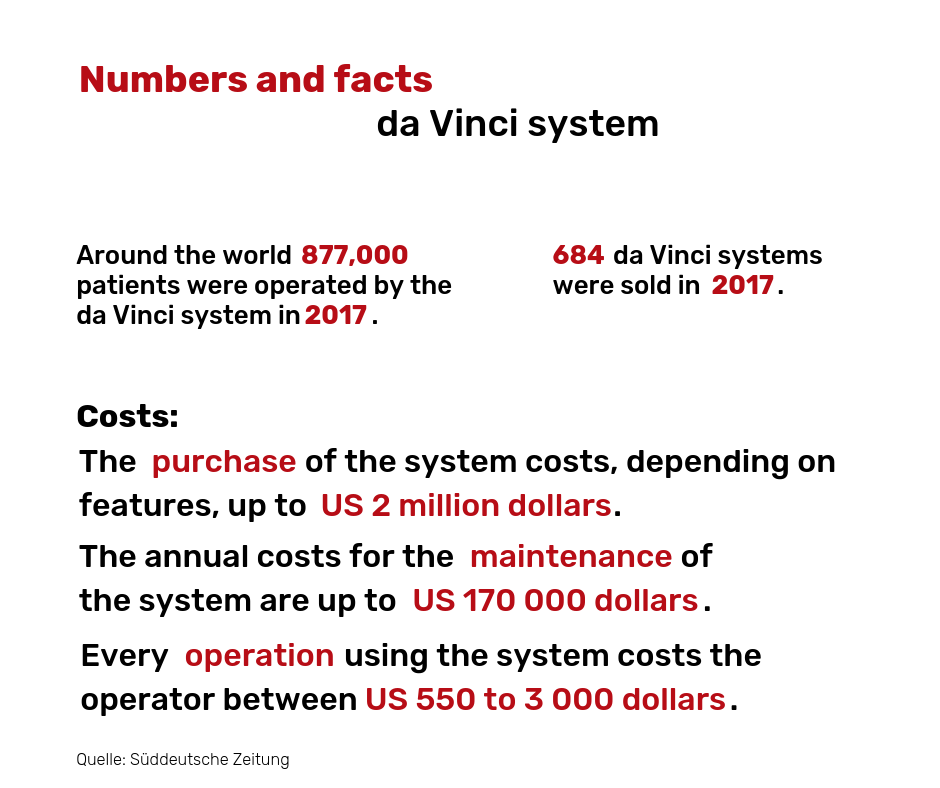In operating rooms, robots can make high-precision cuts and hold 3D cameras for optimal data transmission. In care centers, these electronic helpers are already established worldwide, supporting patients with dementia and relieving caregivers from strenuous work.

Future surgeons will have four arms: three for operating and one for holding a camera. They have no head and are not made of flesh and blood. Instead, they consist of special instruments, cables and electronic parts. In order to perform surgery, the robots require a doctor to control the procedure, who uses a control console connected to their mechanical colleague’s workbench. This combination of robot and console is the da Vinci System, developed by the market leading US company Intuitive Surgical. system is the global leader in the field of surgical robotics.
Doctors and patients alike benefit from the system: There are fewer post-op complications, such as poor wound healing, because thanks to robotics, only tiny incisions are necessary. At the University Hospital in Giessen, for example, a robot will be entering the operating room: From summer 2019, doctors there will receive support from a da Vinci system. The physicians can then carry out their interventions with the help of machines, down to a tenth of a millimeter. An involuntary tremble, which could happen to even the most experienced human surgeon, is ruled out by robotic colleagues. And it is also conceivable to equip the doctors with virtual reality, which allows them to immerse themselves even deeper into their surgical field.
Robots as care assistants

In the operating room, focus lies on precise positioning and cutting, as well as high-resolution camera shots. In contrast, in recovery and nursing, there is a focus on humanity. In these areas, robots act as both caregivers and personal support. heir tasks may include managing breakfast and medications, arranging phone calls, playing chess or calling for help in the event of a fall. In the future, this support will help the elderly remain independent for longer. At the same time, the machines help reduce physical strains on hospital staff.
Therapist on a cuddle course
Paro the robot, on the other hand, is already in use to treat advanced dementia. Designed to look like a baby seal, he interacts by moving his head, producing sounds and responding to positive treatment by becoming affectionate. Paro is said to have a calming influence that helps patients to relax and become more talkative. Pepper the robot, in contrast, looks human, except for a display on his chest. He can sing, talk, play, and even do gymnastics. Currently, tests are being performed to evaluate how robots like Pepper and Para can support nursing home staff in the future. Rehabilitation is another possible field for robots. There, they could support patients in physical therapy following a stroke. In the long run, robots will not replace professional doctors, nurses, or therapists. However, they are already a new tool to give patients the best possible support.

